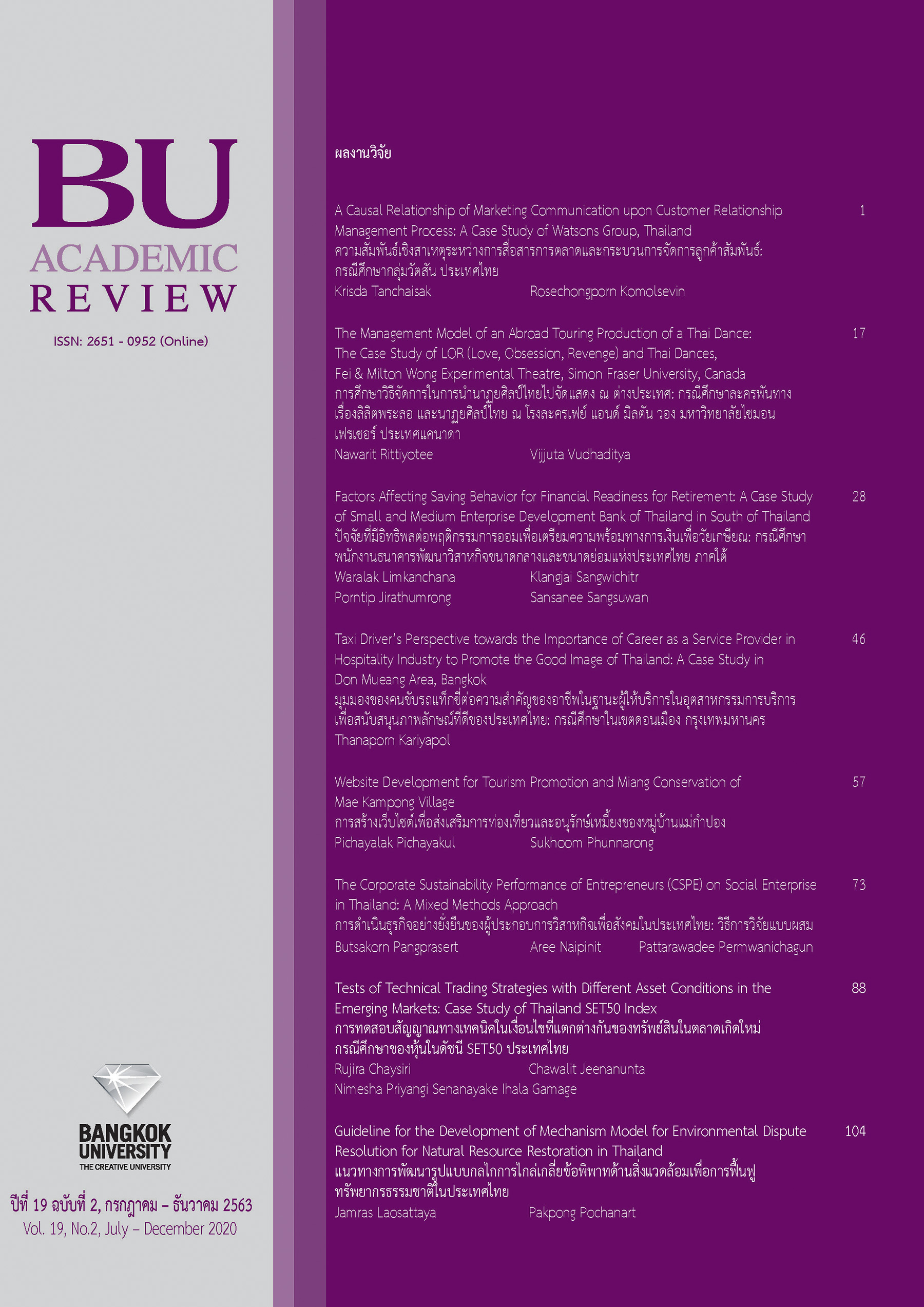The Management Model of an Abroad Touring Production of a Thai Dance: The Case Study of LOR (Love, Obsession, Revenge) and Thai Dances, Fei & Milton Wong Experimental Theatre, Simon Fraser University, Canada
Main Article Content
Abstract
Thai dances are defined as any form of posture and vocal styles, designed on Thai conventional basis, a representation of national identity and cultural preservation. Globalization helps bridge a gap between countries through mutual and shared understanding about cultures, ideologies, traditions, and ways of thinking. This study focused on creating a model of managing an abroad touring production of Thai dances by applying autoethnography method in which the researcher was one of the team who managed a touring Thai dance in Canada. This research elicited hand-on experiences from the production called LOR (Love, Obsession, Revenge) which was performed at Fei & Milton Wong Experimental Theatre, Simon Fraser University, Canada, and arranged by the Performing Arts Department, Bangkok University. The study revealed that, for a model of managing a touring production, there were three possibilities that organisers could face and encounter. These included 1) limited budget but with a great opportunity in collaborations; 2) limited budget and limited opportunity in collaborations; and 3) having budget, but limited opportunity in collaborations. Several and different strategies were applied, varying from one condition to another. The input-process-output model (IPO) was taken into consideration for explanations and discussions.
Article Details
The manuscript submitted for publication must be the original version, submitted only to this particular journal with no prior acceptance for publication elsewhere in other academic journals. The manuscript must also not violate the copyright issue by means of plagiarism.
References
Damrhung, P. (n.d.). Exploring partnerships with common roots: Two new ways of combining classical dance traditions in Mainland Southeast Asian performances. Retrieved February 18, 2019, from http://www.manusya.journals.chula.ac.th/files/essay/_Exploring_partnership_36-52.pdf
Duangdara, Y. (2017). The commodification of Thai dance: A case study of Petjaratsang (Master’s thesis, Silpakorn University).
Jagusiak-Kocik, M. (2017). PDCA cycle as a part of continuous improvement in the production company – A case study. Production Engineering Archives 14, 19-22.
Kholif, A. M., Abou, D. S., Khorshid, A., & Elsherpieny, E. A. (2018). Implementation of model for improvement (PDCA-cycle) in dairy laboratories. Journal of Food Safety, e12451, 1-6. https://doi.org/10.1111/jfs12451
Maréchal, G. (2010). Autoethnography. California: Sage Publications.
Petatano, P., Champadaeng, S., & Suk-Erb, S. (2015). Analysis of the dance of native Isan artists for conservation. Asia Pacific Journal of Multidisciplinary Research, 3(4), 129-132.
Rogelberg, S. G. (2007). Encyclopedia of industrial and organizational psychology. USA: Sage Publications.
Psychology. (2020). Input-process-output model. Retrieved March 2, 2020, from


